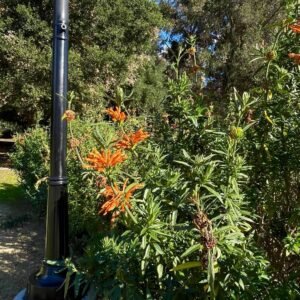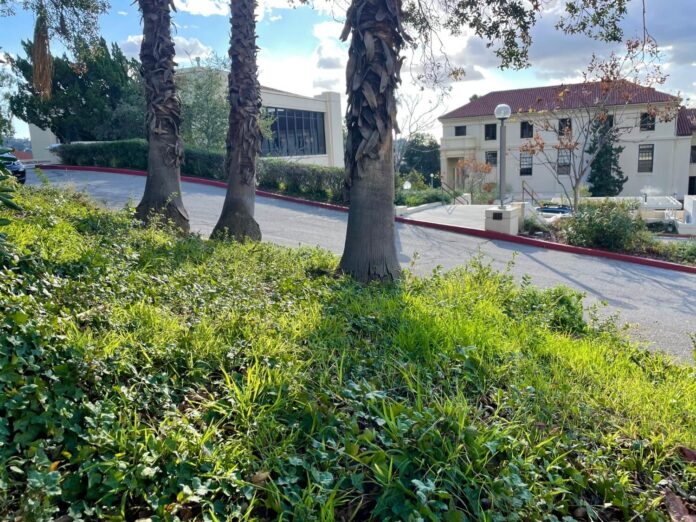President Harry Elam signed the Second Nature Climate Commitment Jan. 21, which has two main goals: carbon neutrality and climate resilience.
Second Nature is a nonprofit organization that focuses on ways to address the climate change crisis in higher education institutions. They provide resources such as webinars, networking, educational information and record-keeping, according to their website.
Second Nature Sustainability Coordinator Alison Linder said the organization is a way to give universities and colleges a platform to have more accountability for their actions.
“[Colleges] are offered three pledges, and the one that Oxy chose is the most comprehensive, and it’s called the Climate Commitment. It focuses on our carbon footprint, but also on resilience, so the campus can be more resilient in the face of potential climate change impacts,” Linder said.
“[The Climate Commitment pledge] focuses on our carbon footprint, but also on resilience, so the campus can be more resilient in the face of potential climate change impacts,” Linder said.
Linder said that she believes that this step towards sustainability is different from those in the past due to its outline for a plan of action. Linder said one step involved appointing an implementation liaison, which was accomplished through the hiring of Linder as the primary expert on sustainability and climate at Occidental. Another step involves providing the college with one year to do a baseline for and record Occidental’s carbon footprint, Linder said. Sitemap, a reporting platform, provides access to the tools needed to calculate the college’s carbon footprint systematically, according to Linder.
“Once we have that baseline, it gives us three years to create an actual plan with action items. I think it’s different from what we’ve done in the past because it’s a real recipe for action,” Linder said. “It gives us very specific things that we need to kind of accomplish with very specific timelines and because we’ve publicly made this pledge, we’re accountable to those goals.”
The Occidental College Climate, Resilience and Equity (OCRE) committee is a committee of faculty, staff, students and trustees who recommended the Second Nature Climate Commitment for Occidental’s unique goals towards sustainability based on their size and resources, according to professor Bevin Ashenmiller, an environmental economist.
“It doesn’t say that our climate action plan has to look [a specific way]. It just gives us a lot of tools and helps us to not have to reinvent the wheel but also allows us the flexibility to do what feels right for our institution, population and everybody here,” Ashenmiller said.

The goal of gathering baseline information on greenhouse gas emissions is to understand where Occidental has the biggest room for improvement, according to Assistant Sustainability Coordinator Isabel Merel ’23. Merel said that further goals will be created based on what the biggest sources of greenhouse gas emissions are coming from.
“For instance, say our transportation greenhouse emissions are partially high, we would look for ways to engage Bengal Bus, Bike Share, the Associated Students of Occidental College (ASOC) sustainability fund and other student-led alternative transportation organizations [in the planning],” Merel said.
According to Linder, this will be an impactful step for Occidental towards sustainability.
“It will help us be a lot more mindful about where we’re investing in because all the decisions we have can be backed by the data that shows where the needs are the greatest,” Linder said.
Linder said that it is important to let students know that there will be many opportunities for involvement in the process, as the sustainability office hopes to be engaged to hear ideas and manage their priorities. This will be a way for student efforts to become “formalized,” according to Linder.
“Students want to do their part, and they also want to know that their institution is doing its part. I think this makes a statement. I think students want to know that we have a really sound process in place to achieve some of these goals,” Linder said.
Merel said she believes that engaging students in a way that makes them feel like they are making a difference will impact the campus and reverberate out to the community.
“In the last few years, for many including myself as a recent alum and a member of Gen Z it can feel really overwhelming and disheartening in thinking that we’re not really making a difference,” Merel said.
Despite the difficulties with data collection, Merel said she believes that this plan involves relationship and community building as they work with the greater campus community to gather information and take the next necessary action steps.
“Community building and community resilience are going to be two things that are gained from this climate leadership pledge that we just signed. The pledge we signed is both carbon neutrality and climate resiliency, so it’s important to understand where our community is on that resiliency scale, such as if we are prepared for any type of climate disaster,” Merel said.
Ashenmiller said she encourages students who are passionate about sustainability and climate equity resilience to become involved as everyone’s voice is needed.
“It’s important that we have as many different voices working on a solution,” Ashenmiller said. “Sometimes people don’t have the same view of the world, so they miss things, and this is not a situation where we can afford to miss a potential solution just because we don’t have everybody in the room.”
Contact Martha Farah at mfarah@oxy.edu
![]()



































